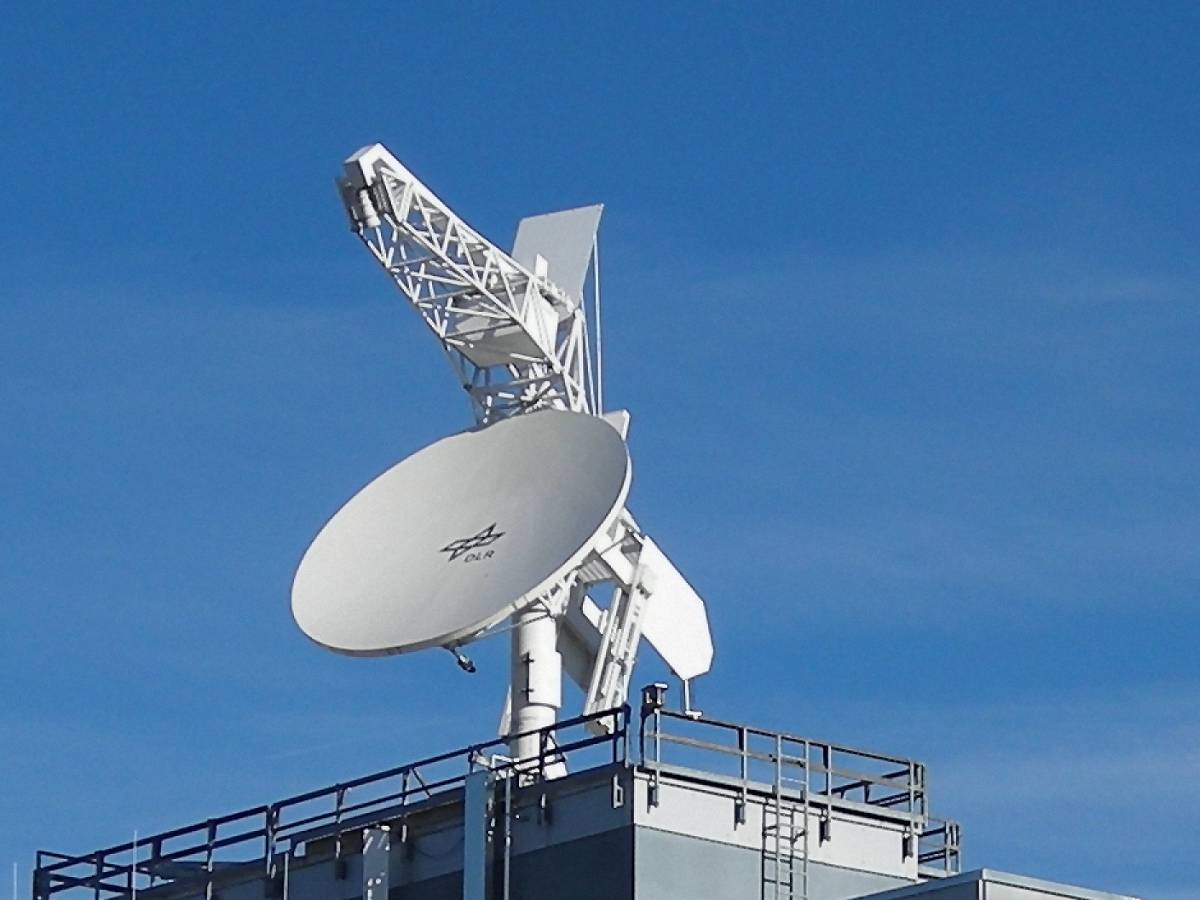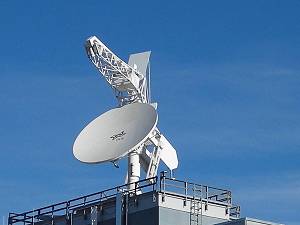Poldirad
Description of the radar set, tactical-technical characteristics

Figure 1: Antenna of the DLR radar “POLDIRAD”, © 2011 Martin Hagen, DLR Oberpfaffenhofen (License: CC–BY–SA 3.0)

Figure 1: Antenna of the DLR radar “POLDIRAD”, © 2011 Martin Hagen, DLR Oberpfaffenhofen (License: CC–BY–SA 3.0)
Enterprise Electronics Corporation (EEC®),
subsequent upgrades have been performed by GEMATRONIK GmbH
(now: Selex SI)
| Specifications | |
|---|---|
| frequency: | 5.504 GHz ( C-Band) |
| pulse repetition time (PRT): | |
| pulse repetition frequency (PRF): | 400 … 2400 Hz |
| pulsewidth (τ): | 0.5 µs; 1 µs; 2 µs |
| receive time: | |
| dead time: | |
| peak power: | 500 kW |
| average power: | |
| instrumented range: | 0 … 300 km |
| range resolution: | 75; 150; 300 m |
| accuracy: | |
| beamwidth: | 1 degree |
| hits per scan: | |
| antenna rotation: | max. 2 rev./min |
| MTBCF: | |
| MTTR: | |
Poldirad
POLDIRAD is a polarimetric weather radar developed for research tasks of the Deutsches Zentrum für Luft- und Raumfahrt for highly accurate measurement of precipitation fields. It operates since 1986 on the roof of the Institute but it can also be moved to specific field studies.
The presentation of radar information may be made either on a PPI scope and on an RHI scope. The antenna is an offset parabolic antenna with a diameter of 5 meters. The polarization is elliptical circular, and alternatively linear horizontally and vertically with the option to receive each cross-polarized echo signals. Polarization measurements allow to draw conclusions about the different kinds of particles in the precipitation areas. Doppler measurements of radial speeds provide additional information about the dynamics of the clouds.
